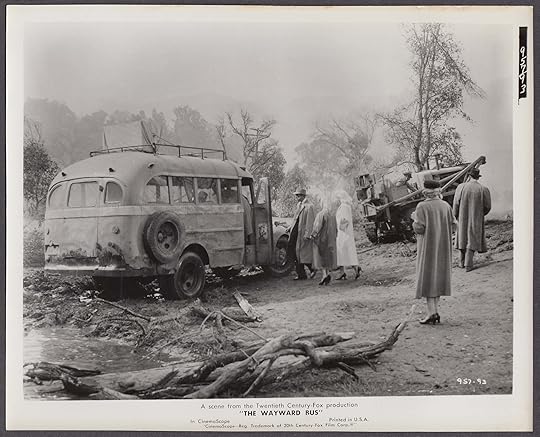What do you think?
Rate this book


352 pages, Paperback
First published February 1, 1947
 come to my blog!
come to my blog!Louie went back toward the front. His eyes had caught a girl coming in from the street. She was carrying a suitcase. All in one flash Louie caught her. A dish! A dish like that he wanted to ride in a seat just behind his own raised driver’s chair. He could watch her in the rear-view mirror and find out about her. Maybe she lived somewhere on his route. Louie had plenty of adventures that started like this.
The back road around the San Ysidro River bend was a very old road, no one knew how old. It was true that the stage coaches had used it, and men on horseback. In the dry seasons the cattle had been driven over it to the river, where they could lie in the willows during the heat of the day and drink from holes dug in the river bed. The old road was simply a slice of country, uncultivated to start, marked only by wheel ruts and pounded by horses’ hoofs. In the summer a heavy cloud of dust arose from its surface when a wagon went by, and in winter, pastelike mud spurted from under horses’ feet. Gradually the road became scooped out so that it was lower than the fields through which it traveled, and this made it a long lake of standing water in the winter, sometimes very deep.

